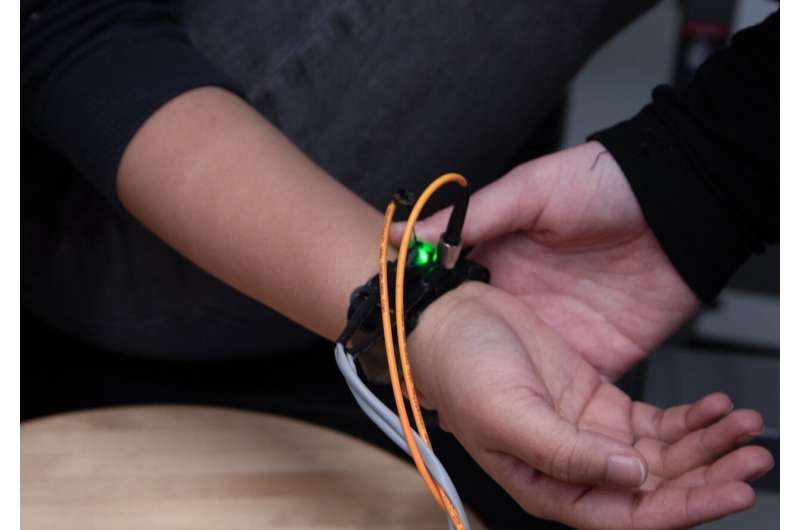“Hypertension affects nearly half of all adults in the US and is the leading cause of cardiovascular disease,” said Ariane Garrett, a doctoral student in Darren Roblyer’s lab at Boston University. “This research is a step toward a wearable device that would let people monitor their blood pressure any time, without a cuff.”
SCOS is a noninvasive imaging technique that measures blood flow by analyzing speckle patterns formed by coherent light scattering from cells and tissue. While it has been used for other applications such as brain and tissue monitoring, this is one of the first studies to explore how SCOS signals relate to blood pressure.
In the journal Biomedical Optics Express, the researchers showed that blood flow and volume information simultaneously acquired by placing their SCOS device on the finger and wrist of 30 volunteers was up to 31% more accurate at estimating blood pressure than using blood volume information alone. Blood volume information, known as photoplethysmography, is the basis of several commercialized optical blood pressure monitors.

